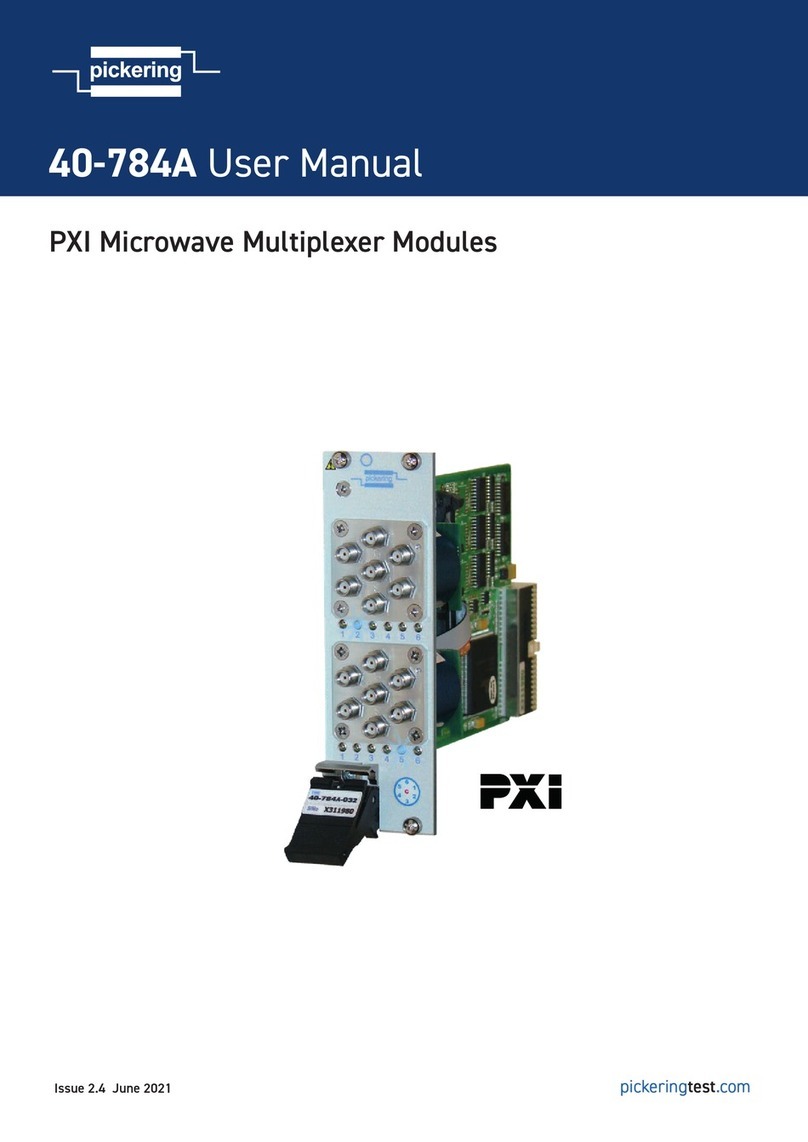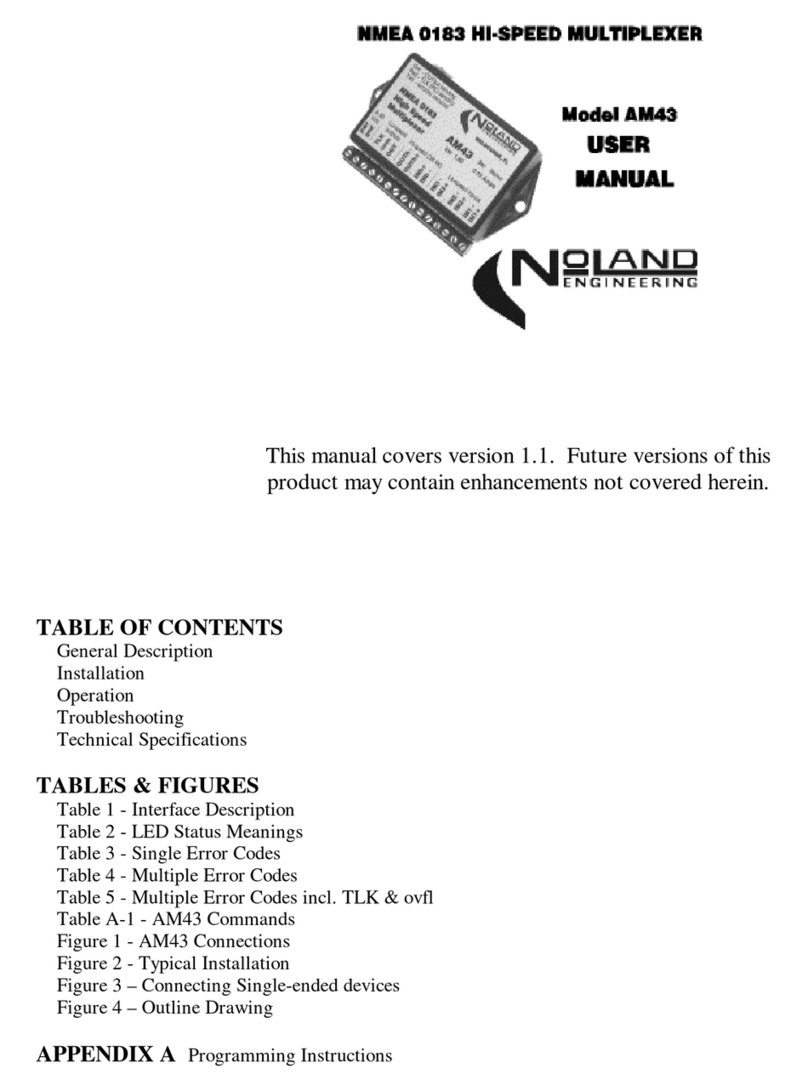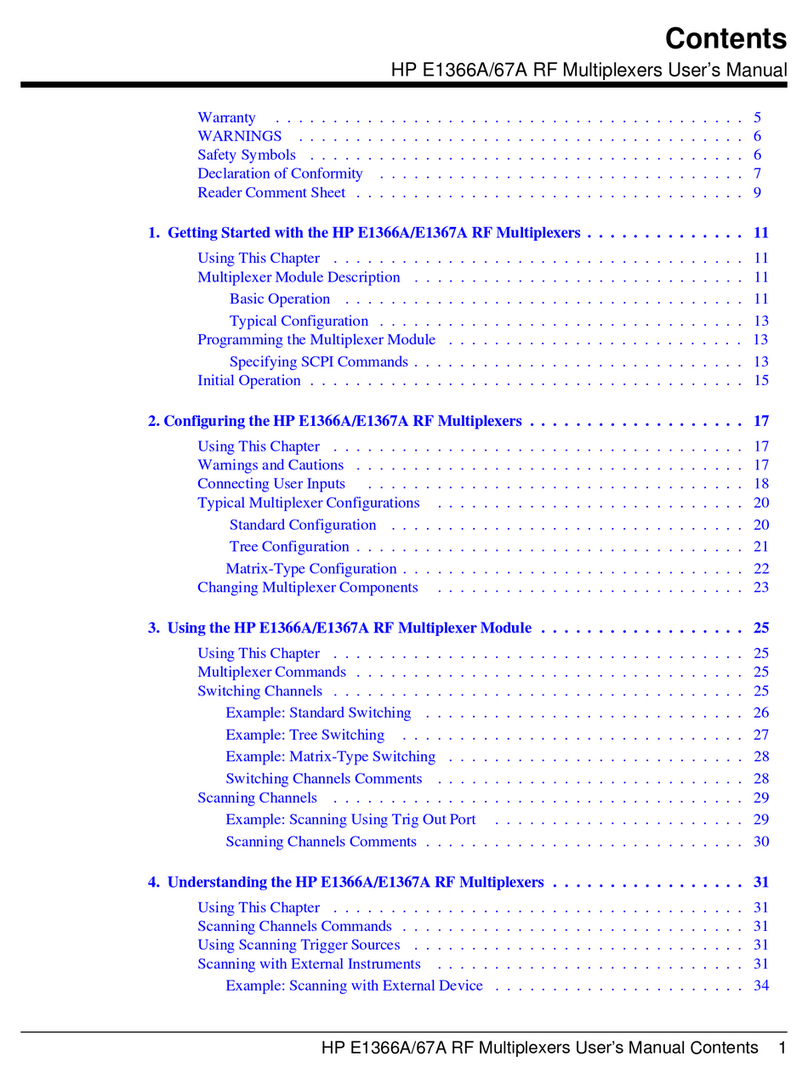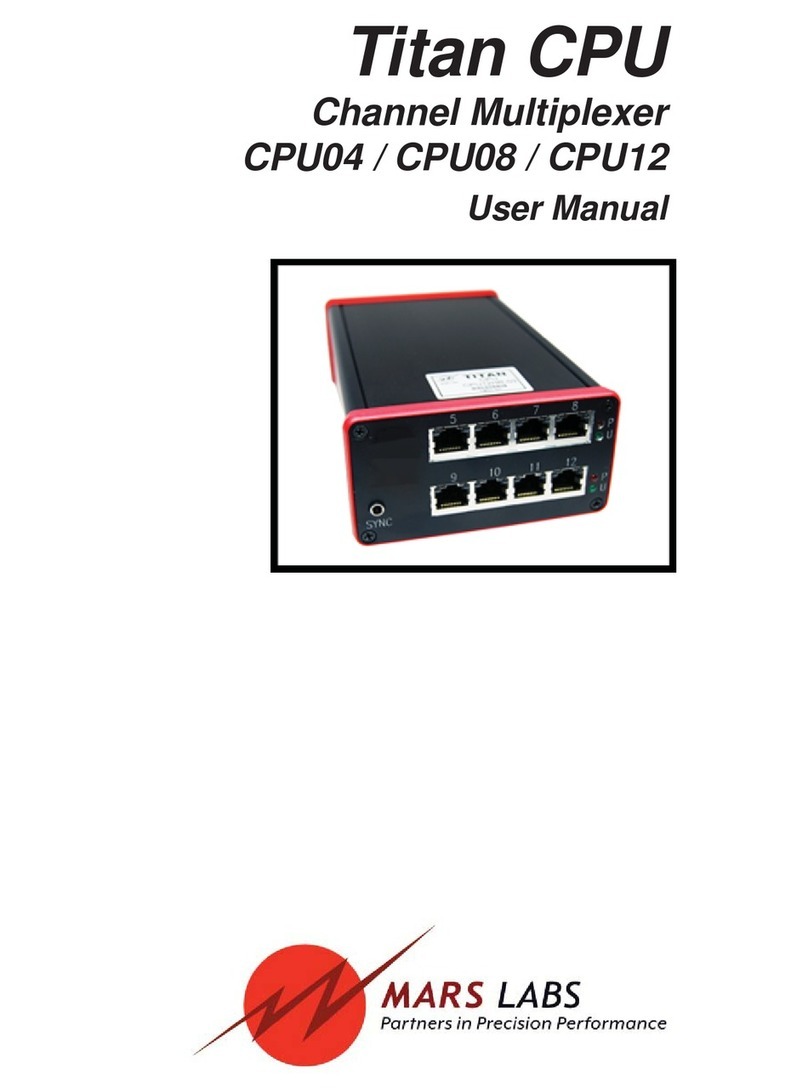Edgetech 2300 Quick start guide

SYSTEM TECHNICAL & USER’S GUIDE
2300 DATA TELEMETRY
2000M ALUMINUM BOTTLE
DELIVERY SPECIFIC DOCUMENT
Document No: 0022174 REV B 30 October 2019
Product ID: 2300
4 Little Brook Road
West Wareham, MA 02576 - USA
Tel: 508-291-0057 / Fax: 508-291-2491
Email: info@EdgeTech.com
FULL SPECTRUM SYSTEM
2300 TECHNICAL GUIDE

2300 System Technical and User’s Guide
Document : 0022174 Rev B Page 2
TABLE OF CONTENTS
1. ERRATA .......................................................................................................................................... 4
2. OVERVIEW .................................................................................................................................... 5
3. 2300 SYSTEM BLOCK DIAGRAM ............................................................................................. 6
4. NETWORK CONFIGURATION .................................................................................................. 6
5. OPERATIONS - GENERAL.......................................................................................................... 8
6. TOPSIDE SYSTEM ASSEMBLY ................................................................................................. 9
6.1 EDGETECH STARMUX IV TELEMETRY MULTIPLEXER TOPSIDE ..........................................9
6.2 TOPSIDE PROCESSING AND DISPLAY COMPUTER ....................................................................11
7. MULTIPLEXER TOPSIDE CONNECTOR/INTERNAL CABLE CONFIGURATION ..... 12
7.1 TOPSIDE 8-PORT SERIAL-TO-IP INTERFACE ...........................................................................12
7.2 TOPSIDE DIGITAL-TO-IP INTERFACE – TRIGGERS (OPTIONAL) ............................................14
8. TOPSIDE 2300 POWER SYSTEM ............................................................................................. 14
9. MULTIPLEXER SUBSEA ASSEMBLY .................................................................................... 14
9.1 SUBSEA 8-PORT SERIAL-TO-IP INTERFACE .............................................................................17
9.2 SUBSEA DIGITAL-TO-IP INTERFACE – TRIGGERS (OPTIONAL)...............................................17
9.3 SUBSEA POWER RELAY INTERFACE .........................................................................................17
10. MULTIPLEXER SUBSEA INTERFACE CONFIGURATION .............................................. 18
10.1 J1 - HV DC INPUT, MODULATED DATA TELEMETRY .............................................................18
10.2 J2 – 48V TRANSPONDER .............................................................................................................18
10.3 J3 – MAGNETOMETER ...............................................................................................................18
10.4 J4 – 1/2-20UNF BLANKING PLUG (FUTURE OPTIONS INTERFACE) ........................................18
10.5 J5 – GENERIC DEVICE; OPTION’S INTERFACE.........................................................................18
10.6 J6 – 7/16-20UNF BLANKING PLUG (FUTURE OPTIONS INTERFACE) ......................................19

2300 System Technical and User’s Guide
Document : 0022174 Rev B Page 3
10.7 J7 – 1/2-20UNF BLANKING PLUG (FUTURE OPTIONS INTERFACE) ........................................19
10.8 J8 – 2205 INTERCONNECT ..........................................................................................................19
10.9 J9 – 24V TRANSPONDER .............................................................................................................19
10.10 J10 – GENERIC DEVICE; OPTION’S INTERFACE.......................................................................19
11. TRIGGERS .................................................................................................................................... 19
12. OPTIONAL ADDITIONAL HARDWARE ................................................................................ 21
12.1 TEST CABLE ................................................................................................................................21
12.2 MAGNETOMETER CABLES .........................................................................................................21
12.3 TRANSPONDER DEVICE ..............................................................................................................21
12.4 OTHER DEVICES .........................................................................................................................22
13. MECHANICAL CONFIGURATION ......................................................................................... 22
13.1 ELECTRONICS .............................................................................................................................22
13.2 OPENING OF PRESSURE HOUSING .............................................................................................22
13.3 SEA GROUND ..............................................................................................................................22
14. FAQ / TROUBLESHOOTING .................................................................................................... 23
14.1 SERIAL PORT TX/RX DETERMINATION ...................................................................................23
14.2 DTE OR DCE PORTS ..................................................................................................................23
14.3 WHAT IS A NULL MODEM CABLE OR CONNECTOR? ...............................................................23
14.4 TERRATERM MONITORING OF NEMA DATA ...........................................................................24
14.5 CHANGING SERIAL PORT BAUD RATE......................................................................................24
14.6 MONITORING SERIAL DATA ......................................................................................................28
ATTACHED DOCUMENTS ................................................................................................................... 30
APPENDIX A. TOPSIDE 8-PORT SERIAL-TO-IP INTERFACE ................................................... 31
APPENDIX B. TOPSIDE DIGITAL-TO-IP INTERFACE (IF APPLICABLE) .............................. 42
APPENDIX C. SUBSEA 8-PORT SERIAL-TO-IP INTERFACE ..................................................... 49
APPENDIX D. SUBSEA POWER RELAY INTERFACE ................................................................. 59

2300 System Technical and User’s Guide
Document : 0022174 Rev B Page 4
1. ERRATA
Date
Rev
Reviewer
Comment
16 September 2019
1
DMD
Initial Release
30 October 2019
B
DMD
Updated drawings and technical procedures. Added
Troubleshooting section.

2300 System Technical and User’s Guide
Document : 0022174 Rev B Page 5
2. Overview
The 2300 Multiplexer and Data Telemetry Assembly is the power, digital telemetry, and device interface
hub of the 2300 vehicle. The system consists of 3 parts: Rack Mounted Topside, Digital Telemetry
conversion, and the Device Multiplexer within the 2300 Vehicle. The Rack Mounted Topside consists of
the multiplexer's data distribution hub, high voltage power supply, and the EdgeTech data display and
control computer. The tow cable terminates at the 2300 Multiplexer pressure housing. The Multiplexer
powers and provides ethernet and serial data connections to several external devices, including the
EdgeTech 2205 Sonar System and Magnetometer sensor (optional). The Multiplexer interface is
designed to have generic power/trigger/serial connectors to allow for a variety of device connections
where only the external interface cable is changed.
The 2300 vehicle is built to support not only multiple Sidescan/Bathymetric and Sub-Bottom
configurations, but the addition of a Multiplexer allows for easier integration of additional sensors such as
a Magnetometer, Beacon, or Environmental Sensor Assembly … to name a few. Unlike previous 2000 or
2200/TVD systems, the Sonar Processing bottle does not directly connect to any of the external sensors.
All sensor and sonar data connects to the multiplexer where it is converted to an IP (Internet Protocol)
packet and transmitted to the Starmux IV Topside.
When data is received at the Starmux IV Topside, the information is made available on the
network interface or on the various Serial Ports. For clarity, the term “Serial Port” refer to the serial
interfacea on the Starmux IV. The serial ports on the Topside Computer are labeled as “COM Ports”.
Again, note that all sensor data is available on the Starmux IV Serial Ports but to merge this data with
Discover or to serially monitor the data with a PC Utility (such as TerraTerm), a serial connection must
be made from the Starmux IV to the PC. With the exception of Serial Port #1, all ports are wired as DCE
(Data Communications Equipment) which allows the user to connect these serial ports to a PC using a
STRAIGHT cable. Serial Port #1 is wired as DTE (Data Terminal Equipment) so it emulates a PC COM
port for interfacing with a NEMA device such as a GPS.

2300 System Technical and User’s Guide
Document : 0022174 Rev B Page 6
3. 2300 System Block Diagram
The general system block diagram, drawing 0021988, depicts the complete 2300 interconnection system
of which the Multiplexer is the data telemetry and power distribution portion. Any individual sensors are
discussed in their commercial manuals.
• Page 1 of 0021988 depicts the Topside Computer and Dual Monitors (if applicable) and the
Starmux IV Multiplexer Chassis Assembly (red dashed box).
• Page 2 of 0021988 depicts the 2300 and 2205 Subsea Pressure housings and the sensors
(optional) this system can be interface.
4. Network Configuration
Internal system devices are configured by making changes in the web-accessible configuration pages. No
device-specific software was written to configure the units. Configuration pages are accessed by clicking
on a saved bookmark (Figure 4-1) or by typing their IP address (listed in Table 4-1) in the address field of
a web browser. Bookmarks are located in the Internet Explorer Favorites Tab or the Favorites Dropdown
Menu. EdgeTech computers are set up with populated Internet Explorer favorites and are configured to
save the last window display.
• If the favorites become corrupted, they can be imported from a saved backup found at
C:\EdgeTech\Multiplexer Configuration\Internet Explorer\boomarks.html.
• The most critical window to keep open is the Subsea Device Power Relays (WebRelay). This
display will depict what device is powered and what is the internal temperature of the Multiplexer
bottle.
Do NOT use Microsoft Edge as the Network Browser. It does not
work well with the various devices’ HTML web pages. Only use
Internet Explorer.

2300 System Technical and User’s Guide
Document : 0022174 Rev B Page 7
Figure 4-1-Internet Explorer Favorites
Device
IP Address
Topside 8-Port Serial-to-IP Converter
192.9.0.201
Topside 4-Port Digital-to-IP Converter
(if applicable)
192.9.0.203
EdgeTech Topside
192.9.0.102
Subsea 10-Device Web Power Relay
192.9.0.204
Subsea 4-Port Digital-to-IP Converter
(if applicable)
N/A
Subsea 8-Port Serial-to-IP Converter
192.9.0.205
2205 Sonar Electronics
192.9.0.101
Table 4-1: Configuration Page Network IP Addresses

2300 System Technical and User’s Guide
Document : 0022174 Rev B Page 8
5. Operations - General
1. At start-up, turn ON the Starmux IV Topside and verify that the current, at 350vdc, is nominally 0.20
amps. This is the current draw of the housekeeping electronics.
2. Open Internet Explorer once the topside computer is operational. All web-accessible device
configuration pages should have an Internet Explorer Tab set up and can also be found under the
Favorites’ Menu or accessed by typing their IP address in (see Table 4-1). If the Subsea components
are not active or fully booted, a specific tab may show “No Device Found” or “Address Not
Accessible.” In these instances, click the refresh icon in Internet Explorer to reload the web page.
3. To activate any of the Subsea hardware, the components must be turned ON via the Power Supply
Relay (WebRelay) web interface (Figure 5-1). From here, you can activate each desired device.
Refer to the various device Appendices for the serial Diagnostic displays which will show which
device is Transmitting (TX) data from the Subsea and Receiving (RX) data at the Topside.
Figure 5-1: WebRelay Control Interface

2300 System Technical and User’s Guide
Document : 0022174 Rev B Page 9
4. The 2205 electronics are controlled via TWO selections on the WebRelay Screen.
• The 2205 electronics and Tri-Frequency/Bathymetric arrays are controlled through the 2205
SONAR (J8) connection.
• If Sub-Bottom is required, the section labeled “2205 SB AMPS (J8)” must also be activated.
NOTE: When the 2205 electronics are powered, a timing sequence is initiated where the SB capacitor
bank begins a trickle charge process for approximately 45 seconds before being fully charged and brought
On-Line. At this point, the “2205 SB AMPS (J8)” WebRelay indicator will show “ON”. If the SB
amplifiers are not required, the WebRelay can be turned OFF until they are needed.
5. The remaining devices can be activated as needed by simply turning the devices “ON.” If an OPTION
connector is not used, it is recommended that power NOT be applied to this bulkhead.
When the system is power cycled, all relays will return to their default OFF state. This is a
precautionary configuration where the user must choose the systems to activate and to have the
ability to isolate any malfunctioning component.
6. Topside System Assembly
6.1 EdgeTech STARMUX IV Telemetry Multiplexer Topside
This chassis provides the Telemetry Interface for all data communications as well as providing the user
with convenient bi-directional serial and trigger interfaces. The front panel is shown in Figure 6-1 and the
rear panel in Figure 6-2. As noted previously … the StarMux IV is the dry side of the 2300’s telemetry
system. To access a sensor’s serial data, a cable must be run from the Starmux IV rear panel serial
connection to a computer (such as the optional Topside PC). The Starmux IV Serial Interfaces are NOT
recognized by the Windows OS and cannot be changed using any Windows utility.

2300 System Technical and User’s Guide
Document : 0022174 Rev B Page 10
Figure 6-1: Topside Multiplexer, Front View
The rear panel provides 4 network interface ports that are internally connected through a network switch.
All network devices share the same base network address of 192.9.0.xxx. The 6 serial interfaces are
mapped to the 6 serial ports within the Subsea multiplexer and configured as DCE devices (with the
exception of Serial Port #1 being DTE). Four BNC connectors are provided to connect FSK and/or
TTL/CMOS digital triggers to the system. Only the FSK input is presently used in the 2300 to provide a
Topside Trigger to the Tracking Beacon. When the Digital I/O feature is active, there is one additional
input and two additional output triggers. The tow cable's coax connection is made at the connector
denoted below.
Figure 6-2: Topside Multiplexer, Rear View
AC Power Switch
Device Specific
Serial Ports
Network Connections
Optional Digital I/O
Triggers
FSK Beacon
Trigger
Coax
Connection
Sea Ground

2300 System Technical and User’s Guide
Document : 0022174 Rev B Page 11
6.2 Topside Processing and Display Computer
A standard Edgetech Topside computer assembly is used to run Discover software and to remotely log in
to the 2205 sonar processor. The computer and the Starmux IV are typically shipped in a rackmount case,
as shown in Figures 6-3 and 6-4. The rackmount computer is optional and can be replaced with the user’s
computer selection. EdgeTech provides all necessary routines on media but it is up to the user to
configure their computer properly or through EdgeTech Customer Service (fee service). The computer is
network connected and can be used to run any commercial application that is designed to interface with
any of the external sensors. For serial devices, the user should connect a cable from the desired Starmux
IV serial connector to either COM1 or COM3, on the computer.
Figure 6-3: Rackmount Topside (Front View)
Topside Computer

2300 System Technical and User’s Guide
Document : 0022174 Rev B Page 12
Figure 6-4: Topside (Rear View)
7. Multiplexer Topside Connector/Internal Cable Configuration
The Topside multiplexer interconnection drawing (red dotted box, pg 1 of 0021988) consists of several
devices that convert serial, FSK Telemetry Trigger, or digital signals (if applicable) to Internet Protocol
(IP). There are no user-serviceable parts within the chassis.
Changes to IP addresses are NOT recommended as the changes must be propagated to each
channel of the Topside and Subsea interfaces. Please contact EdgeTech customer support for
assistance.
7.1 Topside 8-Port Serial-to-IP Interface
This is an 8-port device that converts serial data to IP packets. Starmux IV Serial Port 1 and 3 are
configured to support a Serial-to-TCP broadcast while all remaining channels are point-to-point serially
configured as 9600/8/n/1. This device "listens" to a companion device in the Subsea Assembly.
Configuration screens for this device are found in Appendix A. The Topside serial interfaces are
allocated, as shown in Table 7-1. Should the system configuration become corrupt, a binary factory
Monitor
Connection
s
COM4
COM5
COM2
COM1
Local Ethernet Port

2300 System Technical and User’s Guide
Document : 0022174 Rev B Page 13
configuration file can be reloaded from, C:\EdgeTech\Multiplexer Configuration\\Topside-Serial-8port-
config, on the EdgeTech Topside computer. The device's username is admin, and the password is
superuser. For changes to the Serial Port Settings, see the Troubleshooting Section.
External Device
Serial-to-IP Device
Starmux IV
Rear Panel
Serial Port
Network Port
Address
Navigation
8-port, Serial #1
1
10001
Magnetometer (J3)
8-port, Serial #2
2
10002
Option (J5)
8-port, Serial #3
3
10003
48v Beacon (J2)
8-port, Serial #4
4
10004
24v Beacon (J9)
8-port, Serial #5
5
10005
Option (J10)
8-port, Serial #6
6
10006
Table 7-1: Multiplexer Serial Port Mapping
Connecting serial Navigation Input Data to Starmux IV Serial Port #1 will covert this data to a TCP
Ethernet data transmission that can be read by other network systems … including the 2205 electronics
and/or Discover running on a Topside computer. Data can be read from IP Address 192.9.0.201 : Port
10001.
On the Subsea Multiplexer, connector J5 has been configured to also make its data available to
other networked devices. Typically this is for the transmission of environmental data from such devices
as AML Bathymetric. The device’s serial data is passed to the Subsea Serial-to-IP converter which will
output the data on the Starmux IV Serial Port #3 as well as making it available at IP address 192.9.0.205 :
Port 10003.
NOTE: When working with the TCP Profile for network access to Serial data, the selected IP
address must be of the Serial-to-IP device where the device is connected. So, the Navigation device is
connected to the Starmux IV (Topside) so to “read” this data, a network device must use the Topside IP
address and the assigned port. With the a Subsea device, AML Bathymetric in this example, a network
device must “read” the Subsea IP address, at the assigned port.

2300 System Technical and User’s Guide
Document : 0022174 Rev B Page 14
7.2 Topside Digital-to-IP Interface – Triggers (optional)
This is a 4-port device that converts digital signals (triggers) to IP packets. This device "listens" to a
companion device that is in the Subsea Assembly. Configuration screens for this device are found in
Appendix B. Should the system configuration become corrupt, a binary factory configuration file can be
reloaded from, C:\EdgeTech\Multiplexer Configuration\TopsideDigital-to-IP-config, on the EdgeTech
Topside computer. The device's username is admin, and the password is superuser.
This device is part of the Starmux IV Topside but not applicable to all Subsea systems. Refer to the
system diagram or sales representative to determine if this interface has been designed into the
Subsea system.
8. Topside 2300 Power System
Power is applied to the Topside and Subsea components through the Starmux IV front panel switch.
When voltage is first applied to the system, the "Housekeeping" components are activated within the
Subsea Multiplexer. The Housekeeping devices consist of all data conversion components and network
interfaces. The Housekeeping components will draw 0.20 amps @ 350vdc (as measured at the Subsea
interface using a 15m cable). The Subsea Multiplexer's internal relay control prevents any external
devices from being activated until directed to do so.
9. Multiplexer Subsea Assembly
The Multiplexer assembly (Figure 9-1) receives all sensor data and converts it to an Internet Protocol (IP)
for transmission to the Topside. The multiplexer (drawing 0022066) is designed to support interfaces
specific to a Magnetometer, 24v, and 48v Beacon and the EdgeTech 2205. Additionally, it supports 2
identical OPTION connectors (MCBH8F) which are wired as denoted in Table 9-1. Blanking plugs are
used to seal additional OPTION connectors for future configurations. The end cap is shown in Figure 9-2
and on page 2 of drawing 0022067. All Multiplexer devices are programmed to look for data at a specific
port and IP address. Changes to either of these must be propagated throughout the entire system.
Changes to the IP addresses are NOT recommended as an incomplete change will compromise data
transfer between the Topside and Subsea interfaces.

2300 System Technical and User’s Guide
Document : 0022174 Rev B Page 15
Figure 9-1: Multiplexer Assembly
Power Board
"WebRelay"
Power Relays
Ethernet Splitter
Modem / FSK Receiver
Power Separation Module
Capacitor Bank
Network Switch
Serial to IP Converter
(underneath)
Ethernet/Trigger Splitter
Power Supply Module
Capacitor Bank

2300 System Technical and User’s Guide
Document : 0022174 Rev B Page 16
MCBH8F
Description
1
n/c
2
0VDC
3
RS232 (TO device)
4
RS232 (FROM device)
5
Trig/Serial GND
6
+24 VDC
7
Trig (from 2205)
8
+12 VDC
Table 9-1: Generic Sensor Bulkhead Wiring Configuration
Figure 9-2: Multiplexer End Cap
J9
J8
J7
J6
J5
J4
J3
J1
J2
J10

2300 System Technical and User’s Guide
Document : 0022174 Rev B Page 17
9.1 Subsea 8-Port Serial-to-IP Interface
This is an 8-port device that converts serial data to IP packets. All channels are configured as 9600/8/n/1.
This device "listens" to a companion device in the Subsea Assembly. Configuration screens for this
device are found in Appendix C. Should the system configuration become corrupt, a binary factory
configuration file can be reloaded from, C:\EdgeTech\Multiplexer Configuration\Subsea-8PortSerial , on
the EdgeTech Topside computer. The device's username is admin, and the password is superuser. For
changes to the Serial Port Settings, see the Troubleshooting Section.
9.2 Subsea Digital-to-IP Interface – Triggers (optional)
This is a 4-port device that converts digital signals (triggers) to IP packets. This device "listens" to a
companion device that is in the Subsea Assembly. Configuration screens for this device are found in
Appendix B. Should the system configuration become corrupt, a binary factory configuration file can be
reloaded from, C:\EdgeTech\Multiplexer Configuration\SubseaDigital-to-IP, on the EdgeTech Topside
computer. The device's username is admin, and the password is superuser.
This device is presently not a standard Subsea component. Refer to the system diagram or your
EdgeTech sales representative to determine if this interface has been designed into the Subsea
system.
9.3 Subsea Power Relay Interface
Commercially called the "WebRelay," this web-accessible device is used to Turn On/Off all external
hardware. Configuration screens for this device are found in Appendix D. The relay assembly is
designed such that ALL external devices are powered OFF when power is first supplied to the system. It
is recommended that power be applied to all devices sequentially and with a 1-minute delay to allow the
sensor voltages to stabilize and minimize large initial surges. This device's Web Display also provides a
display of the Multiplexer Bottle's internal temperature. During FAT, the internal temperature did not
exceed 105⁰F (40.5⁰C). It is recommended that the internal temperature not exceed 122⁰F (50⁰C). There
is no username/password to access the main control page where the relays are turned ON/OFF. However,
if changes are needed to the unit's configuration, the device's username is admin, and the password is
webrelay.

2300 System Technical and User’s Guide
Document : 0022174 Rev B Page 18
10. Multiplexer Subsea Interface Configuration
The Subsea Multiplexer is designed to provide power and data telemetry to a host of external sensors.
Aside from the specific device bulkheads, there are 5 generic bulkhead configurations whose external
cables are customized to route the available signals to the desired device. While plugging the cable meant
for J2 into J3 won't provide any useful data communications, it also will not harm the hardware by
applying voltage to the wrong interface pins. This also allows other future devices to be plugged into the
multiplexer provided that it needs no more than what is presently provided (as denoted in Table 10-1).
Please contact EdgeTech Customer service if a configuration change is needed.
10.1 J1 - HV DC Input, Modulated Data Telemetry
The coax tow cable connects to pigtail (drawing 0012218), which in turn plugs into connector J1
(drawing 0022176) to provide power and modulated telemetry to the subsea components.
10.2 J2 – 48v Transponder
The End Cap port is fitted with a bulkhead (drawing 0022470) or blanking plug based on system
requirements. The Topside FSK trigger is connected to this bulkhead to trigger the beacon. This
connector’s serial data is available on Starmux IV Serial Port #4.
10.3 J3 – Magnetometer
The Magnetometer (if applicable) is connected to this bulkhead (drawing 0022192). This connector’s
serial data is available on Starmux IV Serial Port #2.
10.4 J4 – 1/2-20UNF Blanking Plug (future Options Interface)
End Cap port is sealed with a Blanking Plug.
10.5 J5 – Generic Device; Option’s Interface
The external device is connected to this bulkhead (drawing 0022191). Serial data is also available to
other networked devices, from the externally connected device at 192.9.201:10003. This connector’s
serial data is available on Starmux IV Serial Port #3. Trigger A, from the 2205, is connected to this
bulkhead.

2300 System Technical and User’s Guide
Document : 0022174 Rev B Page 19
10.6 J6 – 7/16-20UNF Blanking Plug (future Options Interface)
End Cap port is sealed with a Blanking Plug.
10.7 J7 – 1/2-20UNF Blanking Plug (future Options Interface)
End Cap port is sealed with a Blanking Plug.
10.8 J8 – 2205 Interconnect
This bulkhead (drawing 0022199) provides a connection for the 48Vdc input to the 2205 electronics and,
separately, 48vdc to the 4xSB amplifiers, 2 triggers (A & C), and 10/100 Ethernet between the
Multiplexer and the 2205 Sonar System via cable assembly (drawing 0020762).
10.9 J9 – 24v Transponder
The external device is connected to this bulkhead (drawing 0021981). The Topside FSK trigger is
connected to this bulkhead to trigger the beacon. This connector’s serial data is available on Starmux IV
Serial Port #5.
10.10 J10 – Generic Device; Option’s Interface
The external device is connected to this bulkhead (drawing 0022191). This connector’s serial data is
available on Starmux IV Serial Port #6. Trigger C, from the 2205, is connected to this bulkhead.
11. Triggers
A Frequency Shift Keyed (FSK) modulated trigger is provided as standard with the 2300. This is a TTL
input to Starmux IV Topside. The trigger is then distributed to the 24v & 48vdc Beacon connectors.
Table 11-1 details the triggers available in the system, when the Digital I/O (optional) is
incorporated and used as denoted on the Multiplexer's rear panel. When the Digital I/O telemetry
interface is used, the FSK trigger is deactivated. Systems triggers require TTL/CMOS voltage levels (0-
5vdc). Trigger A is available on ALL of the 8-pin generic option device bulkheads to synchronize the
device to the 2205's master trigger. The trigger direction is hardware configured and cannot be altered.
There is a 11.1 +/- 0.7ms delay in the transmission of a trigger over the network.

2300 System Technical and User’s Guide
Document : 0022174 Rev B Page 20
Trigger
Direction
Description
A
Output
Trigger A from the 2205. This is
synchronized to all SONAR transmissions.
B
Input
1pps
C
Output
Unused
D
Input
Optional Beacon Trigger provided by the
beacon's topside hardware.
Table 11-1: Trigger Configuration for Optional Digital I/O (non-FSK) Interface
The FSK can be verified as being received and processed by the 2205 through the use of the SONAR ->
Diag display (figure 11-1). The red circled area will show the value of "Trigin" toggling between X7 and
X5 as it receives a trigger on the 2205 'B/1' input trigger.
Figure 11-1: SONAR DIAG Display
Other manuals for 2300
3
Table of contents
Popular Multiplexer manuals by other brands
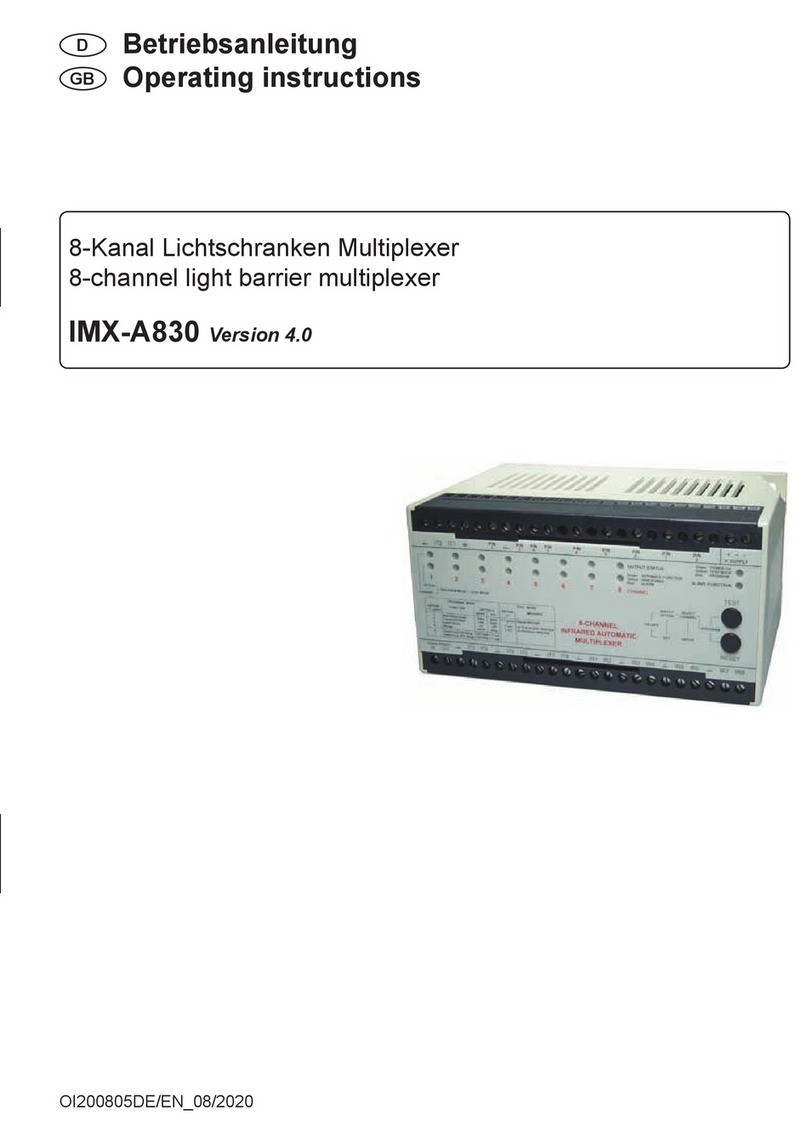
Pantron
Pantron IMX-A830 operating instructions
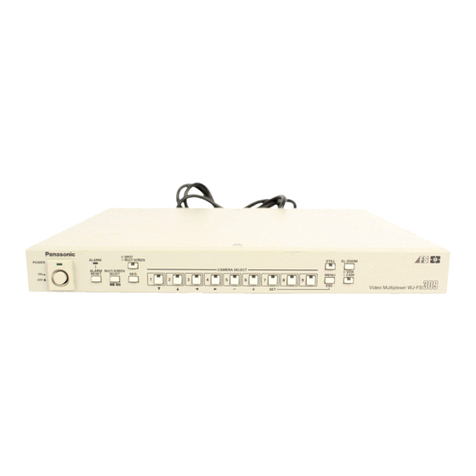
Panasonic
Panasonic WJ-FS309 operating instructions
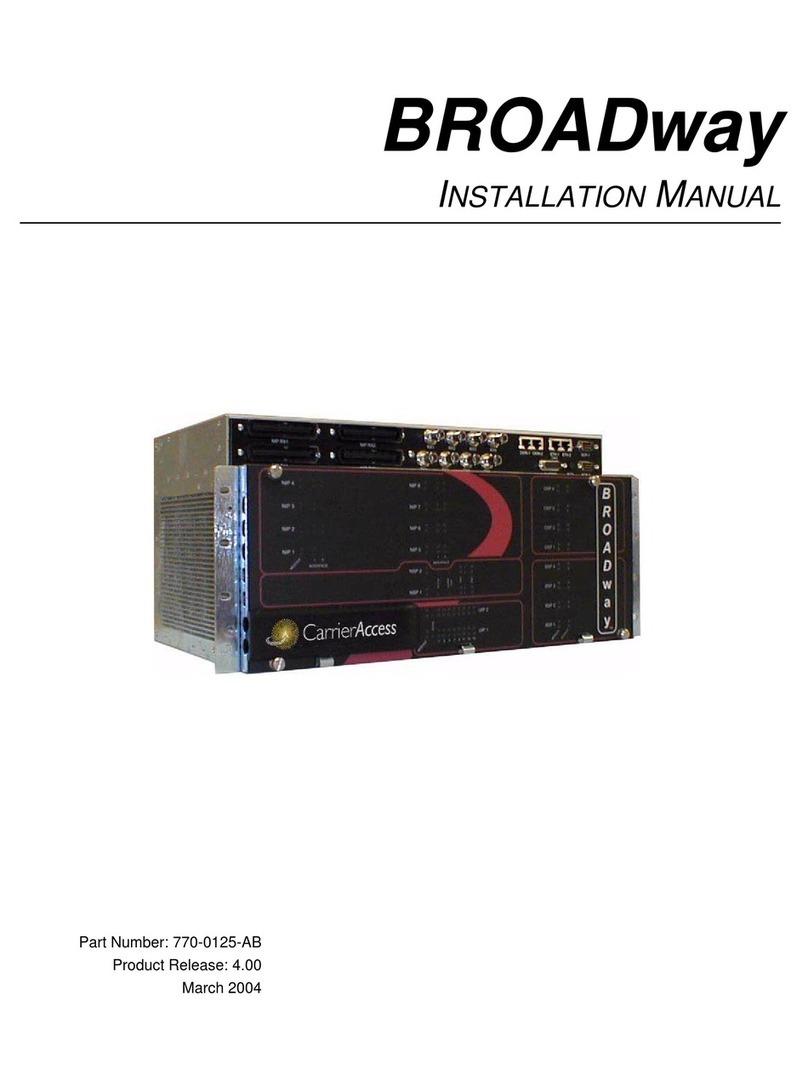
Carrier Access
Carrier Access BROADway System 770-0125-AB installation manual
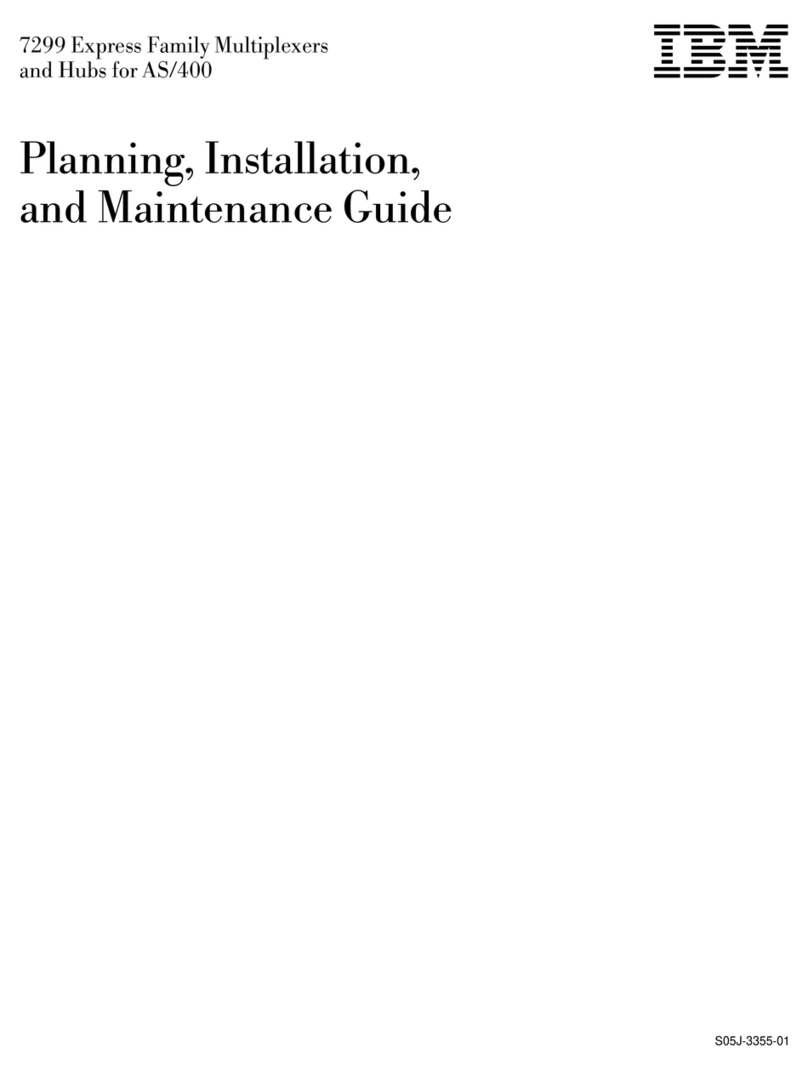
IBM
IBM 1PA Operational, installation, and maintenance guide
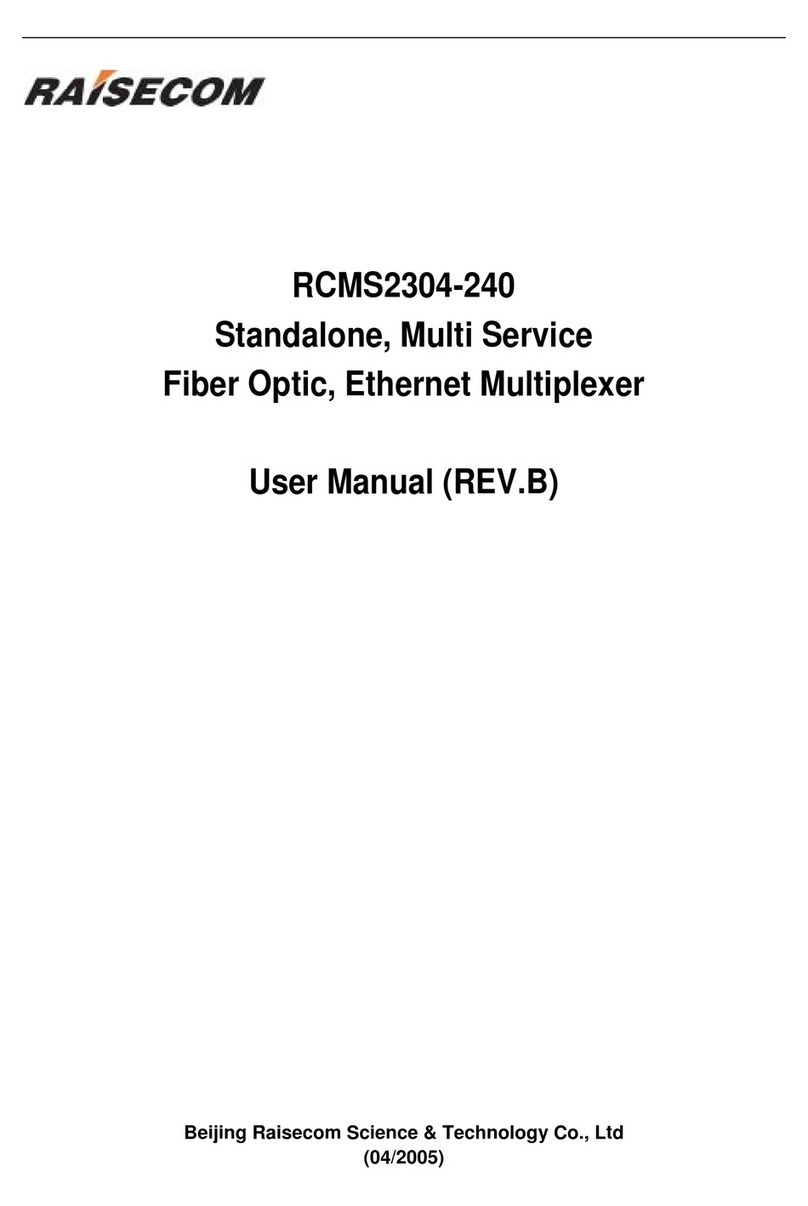
Raisecom
Raisecom RCMS2304-240 user manual
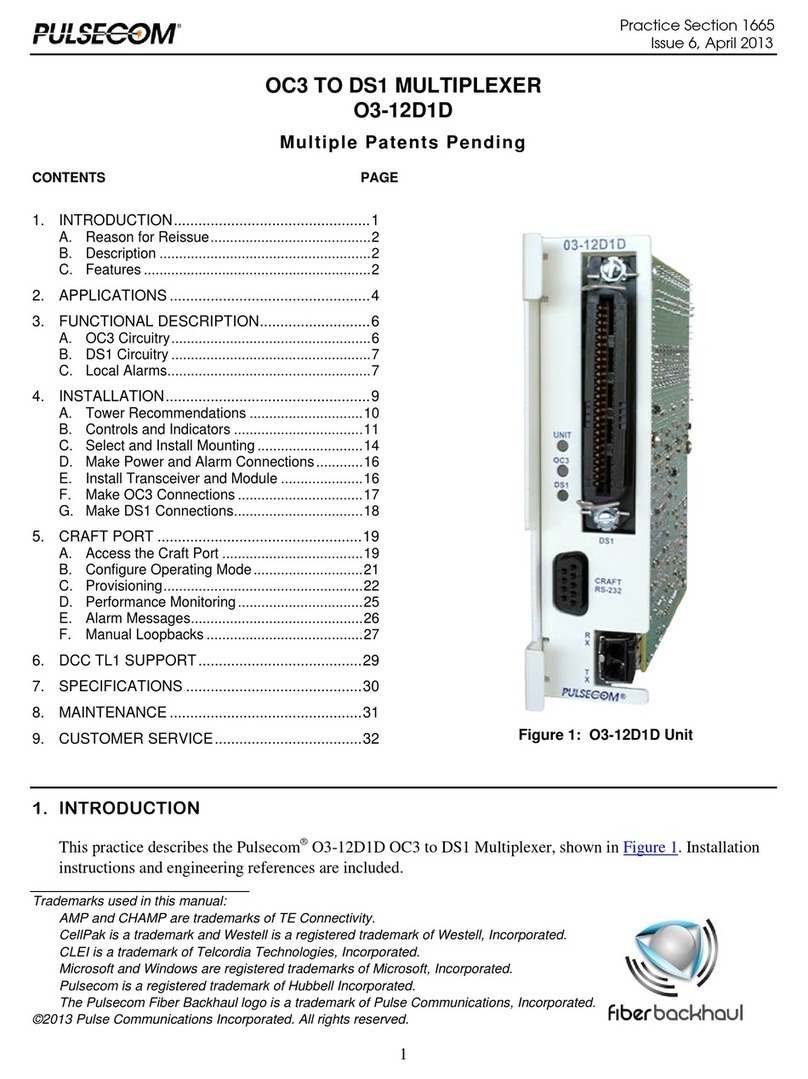
PULSECOM
PULSECOM O3-12D1D manual
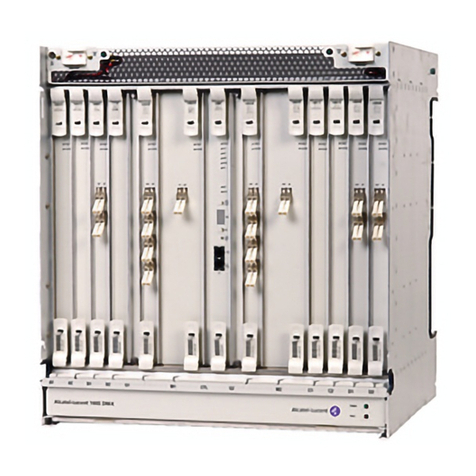
Alcatel-Lucent
Alcatel-Lucent Data Multiplexer Explore 1665 installation manual
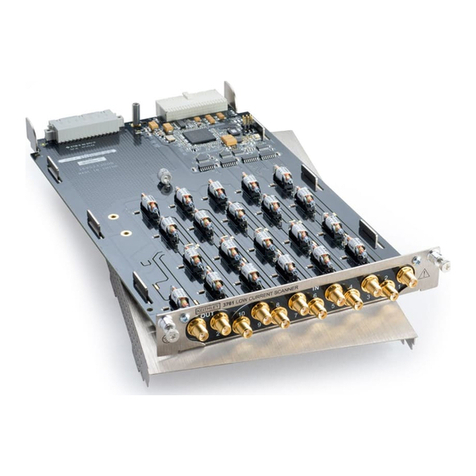
Keithley
Keithley 3761 user manual
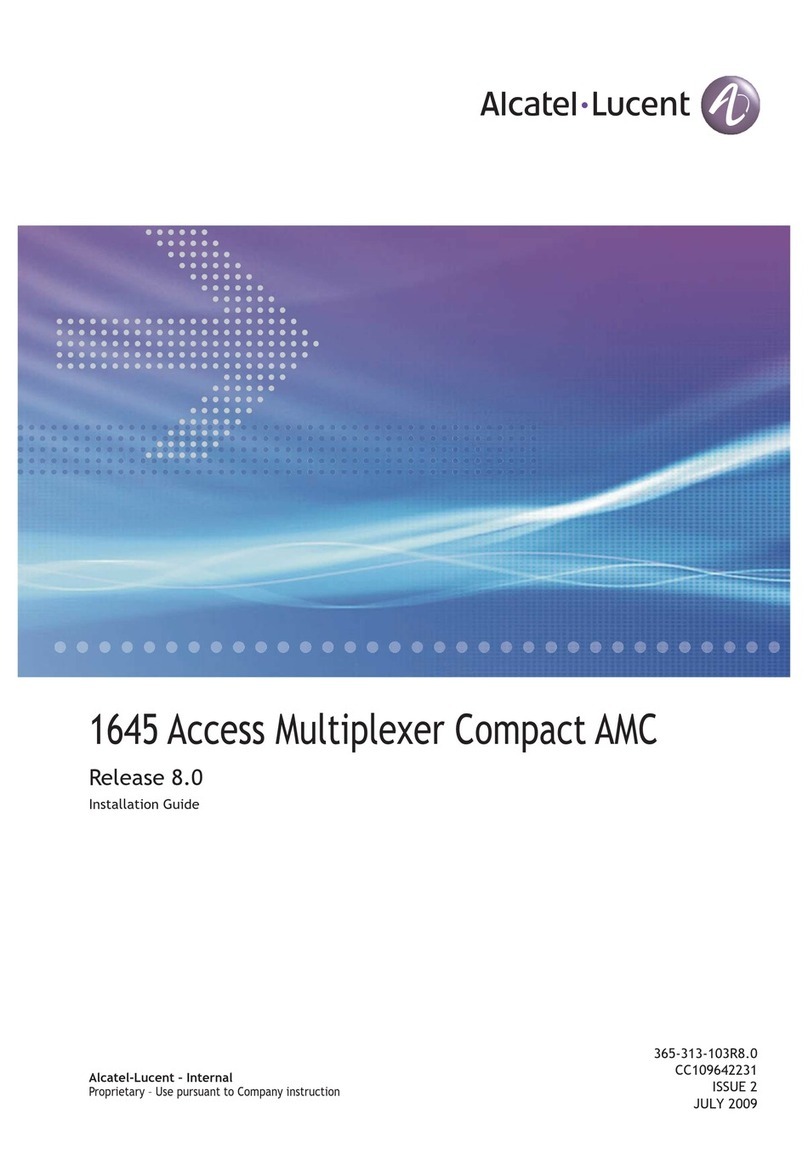
Alcatel-Lucent
Alcatel-Lucent 1645 AMC installation guide
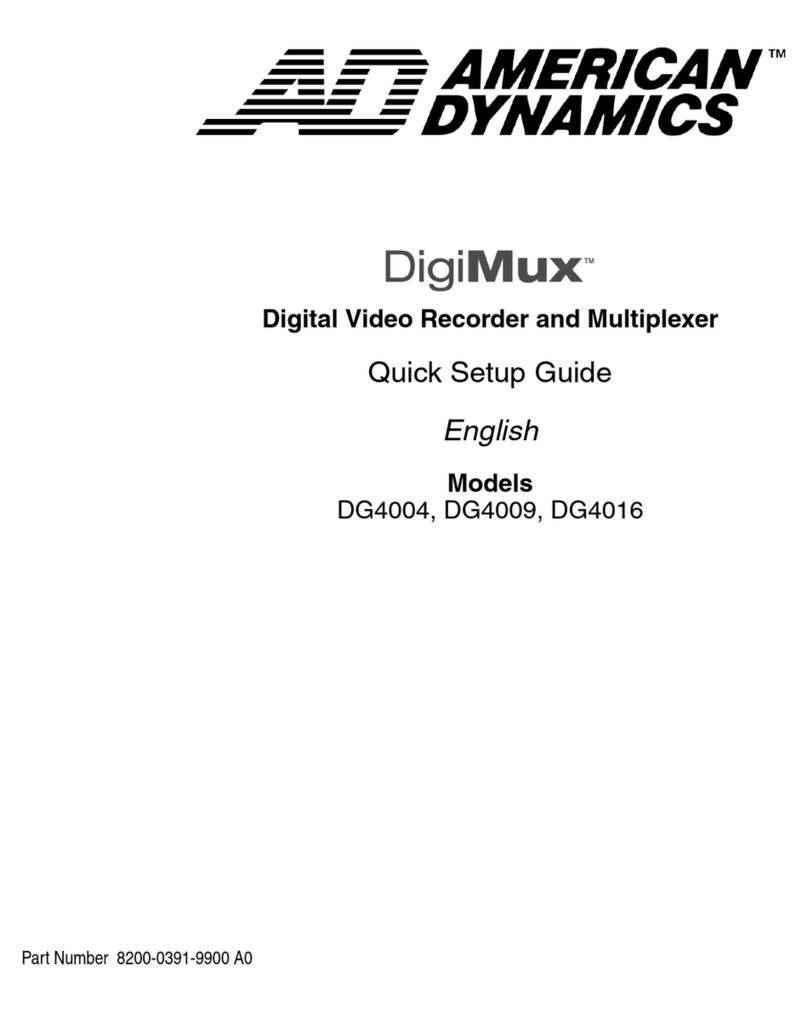
American Dynamics
American Dynamics DigiMux DG4004 Quick setup guide
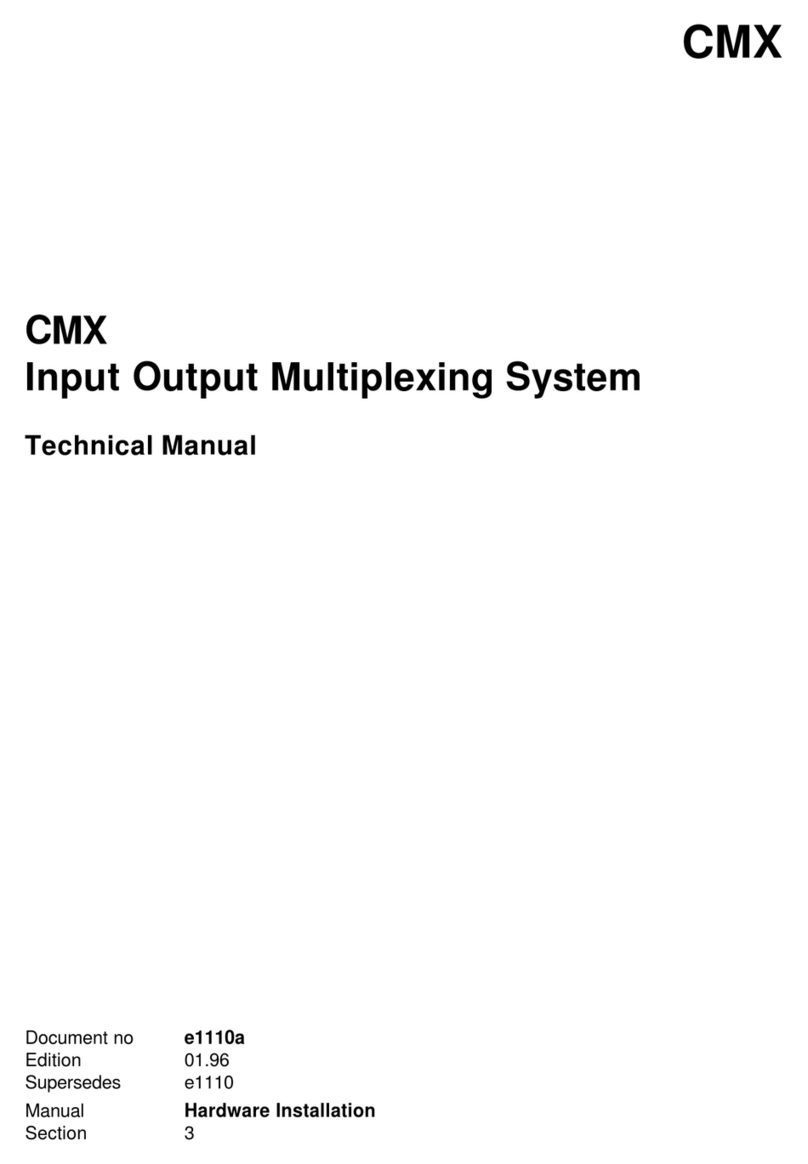
Siemens
Siemens Cerberus Dati Technical manual
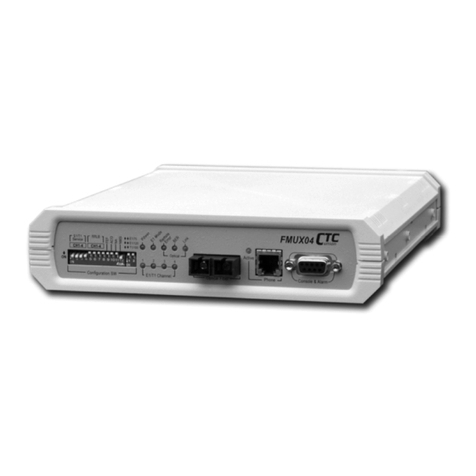
CTC Union
CTC Union FMUX04 user manual

